

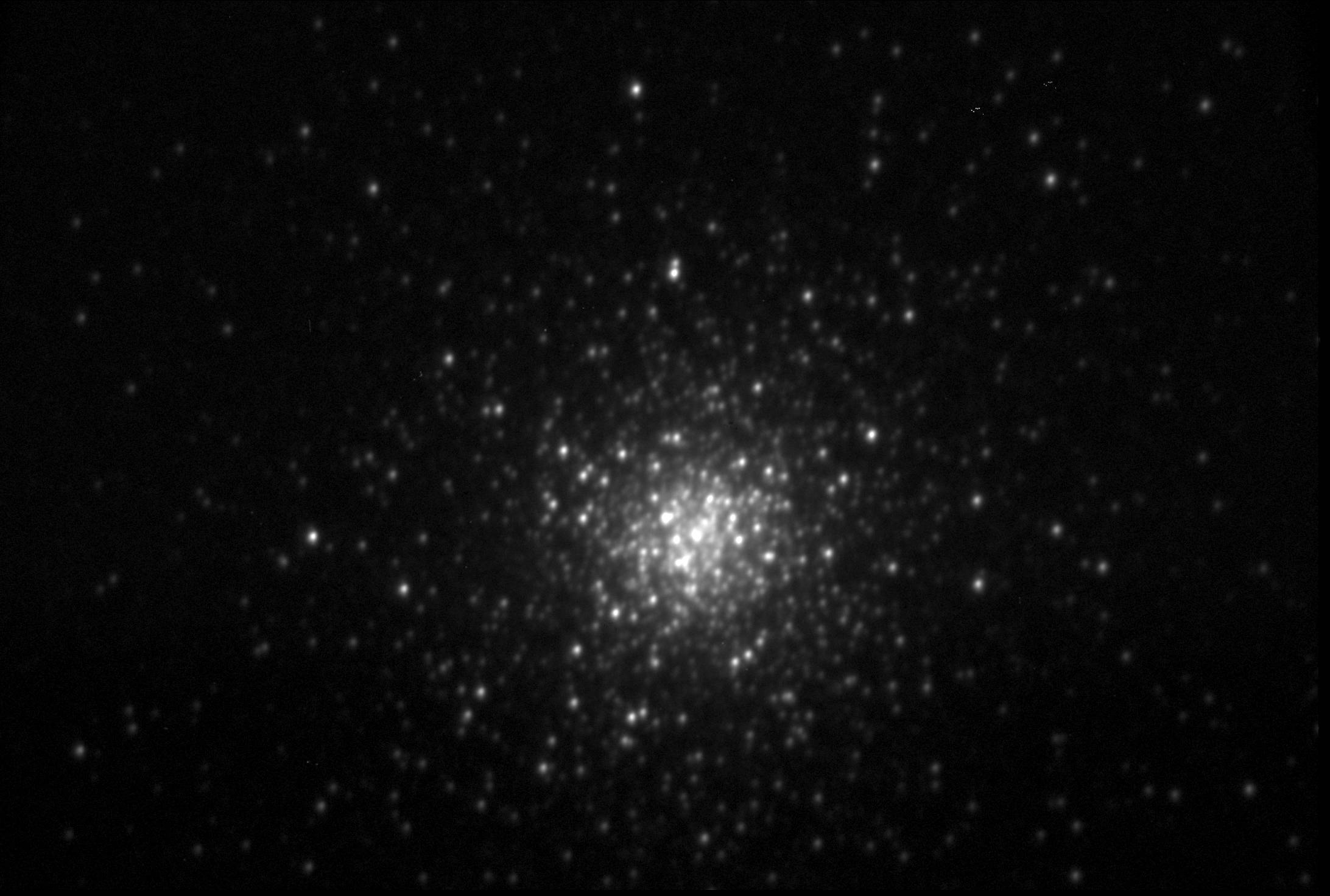
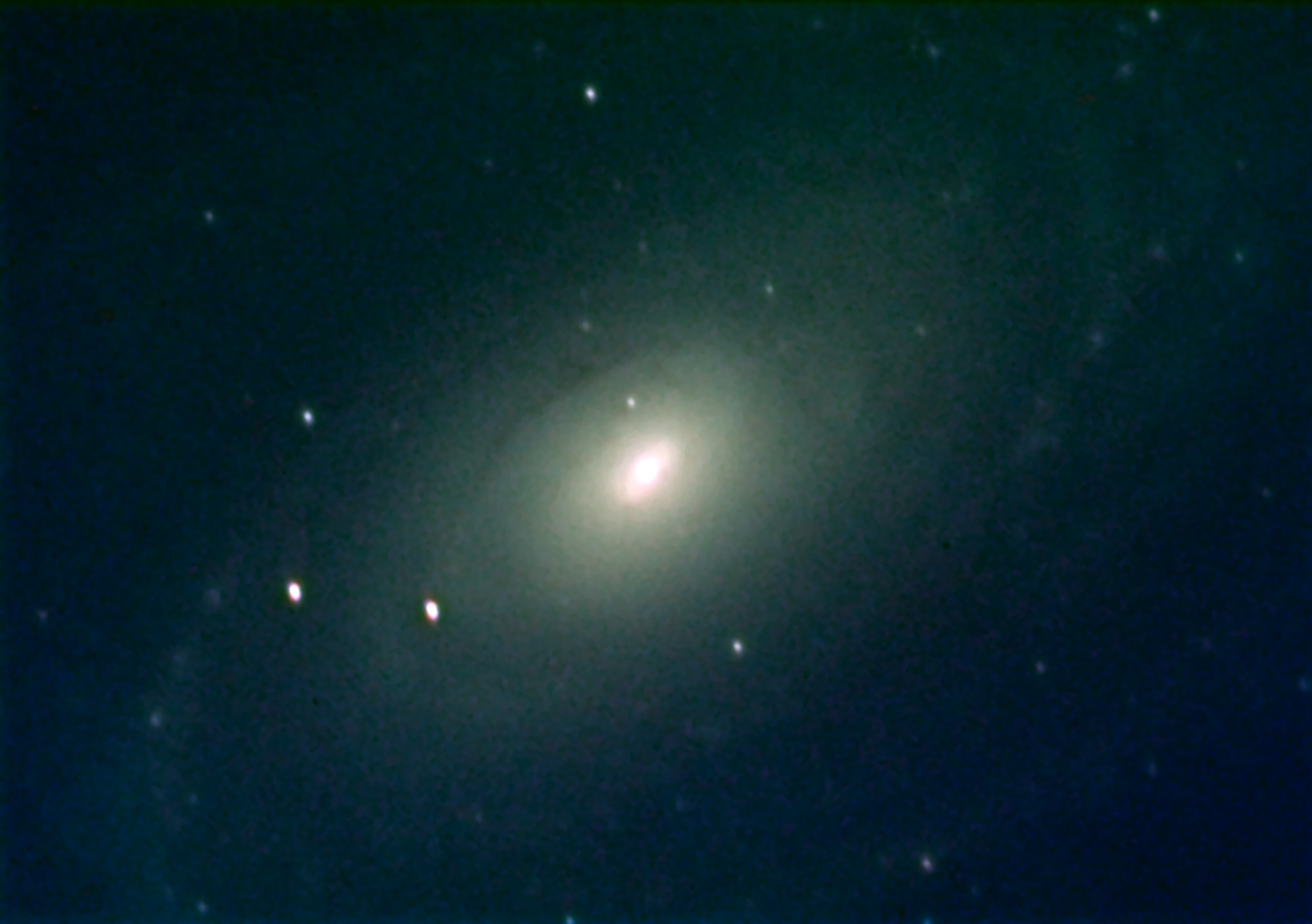

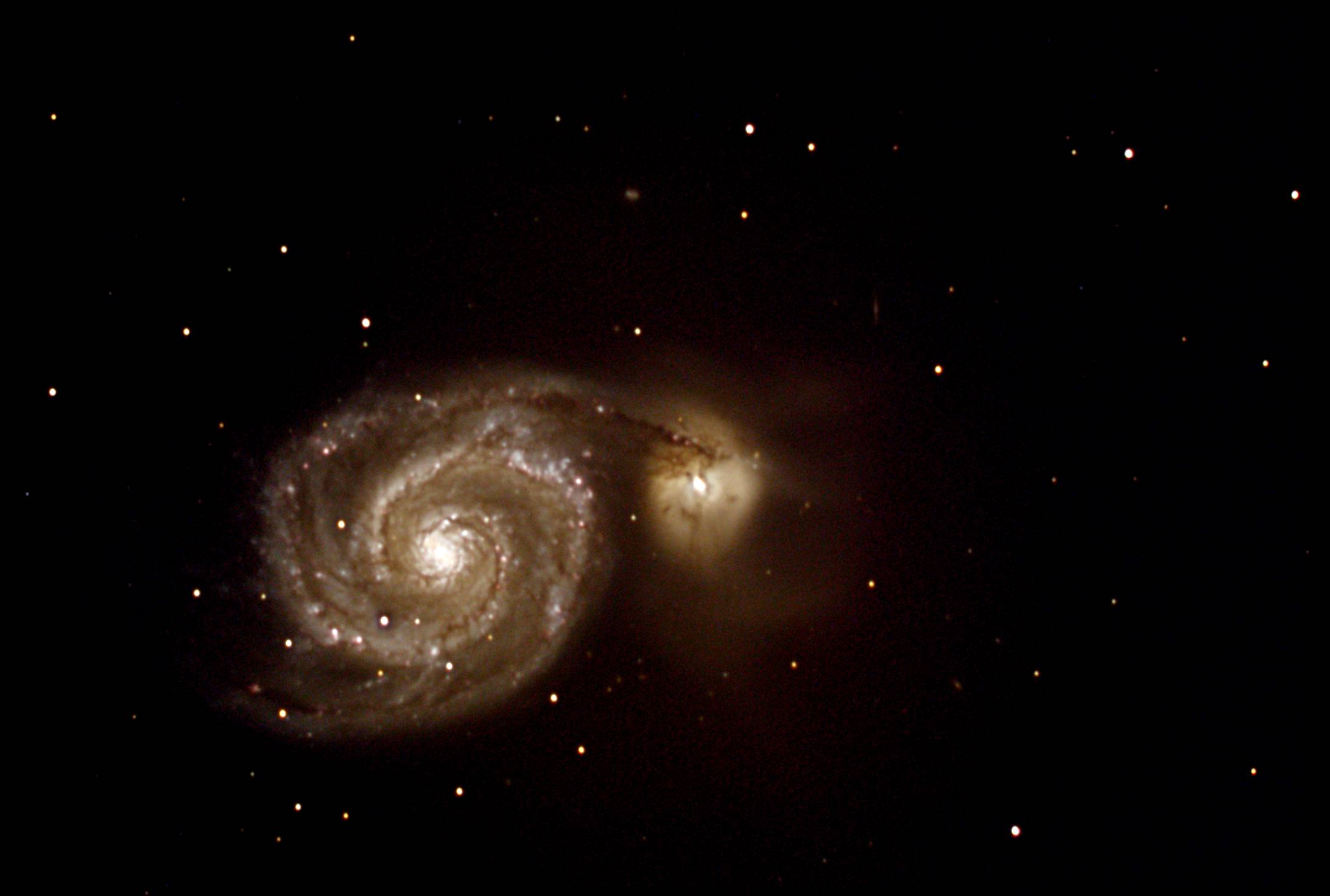
Sum of 6 x 30s exposures, luminance filter only, QSI 532ws camera at f11.
The plan was to take more exposures, including RGB frames, but the autoguiding started to play up. I tracked the problem down to the drain on the power supply from the dew heater, every time it switched on it dropped the power supply to the telescope. I am going to have to run the dew heater from another power source in future.
Sum of 10 x 60s luminance plus 5 x 60s for each of R, G & B filters, QSI 532ws camera at f11.
Things never quite go to plan.....many of the exposures were taken through the leaves of the Horse Chestnut tree in my garden. The guide star was completely lost for the colour frames and were taken unguided.
Sum of 13 x 180s luminance plus 5 x 180s for each of R, G & B filters, QSI 532ws camera at f 6.57.
Tonight everything seemed to work out. There was a light layer of cloud, so the seeing was not at its best, but the equipment all worked and no trees got in the way! Very little wind, PhD guide used to track guide star.
Further information on this picture can be found in the link below:
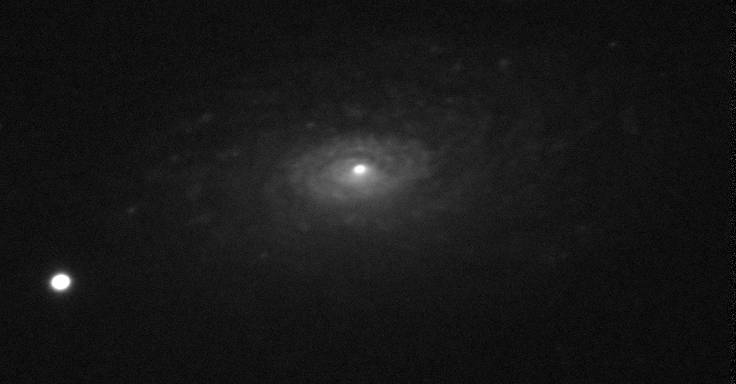
Sum of 12 x 30s exposures, f11, luminance filter only.
The moon was almost full, so not ideal for imaging. The aim was to see how it fitted in the frame and get an idea of the suitable exposure time. The star at the bottom left is about 2/3 of the way to pixel saturation.
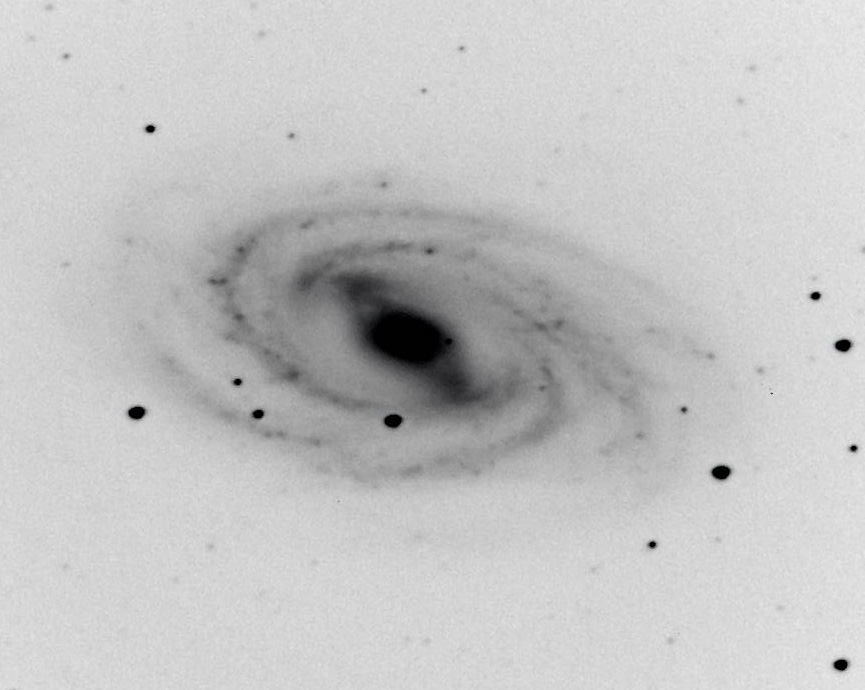
CGE1400 at f6.55. L x 48min, RGB each 16min. Main camera QSI 532ws, each exposure 120s. PhD guide used with 4s exposures on guide camera.
The seeing was not very good, there was thin high level cloud present.
Below is a negative image to show the structure of the arms better
More information on barred spirals
.

A wide field view of M42 can be seen on the FTL98 image page:
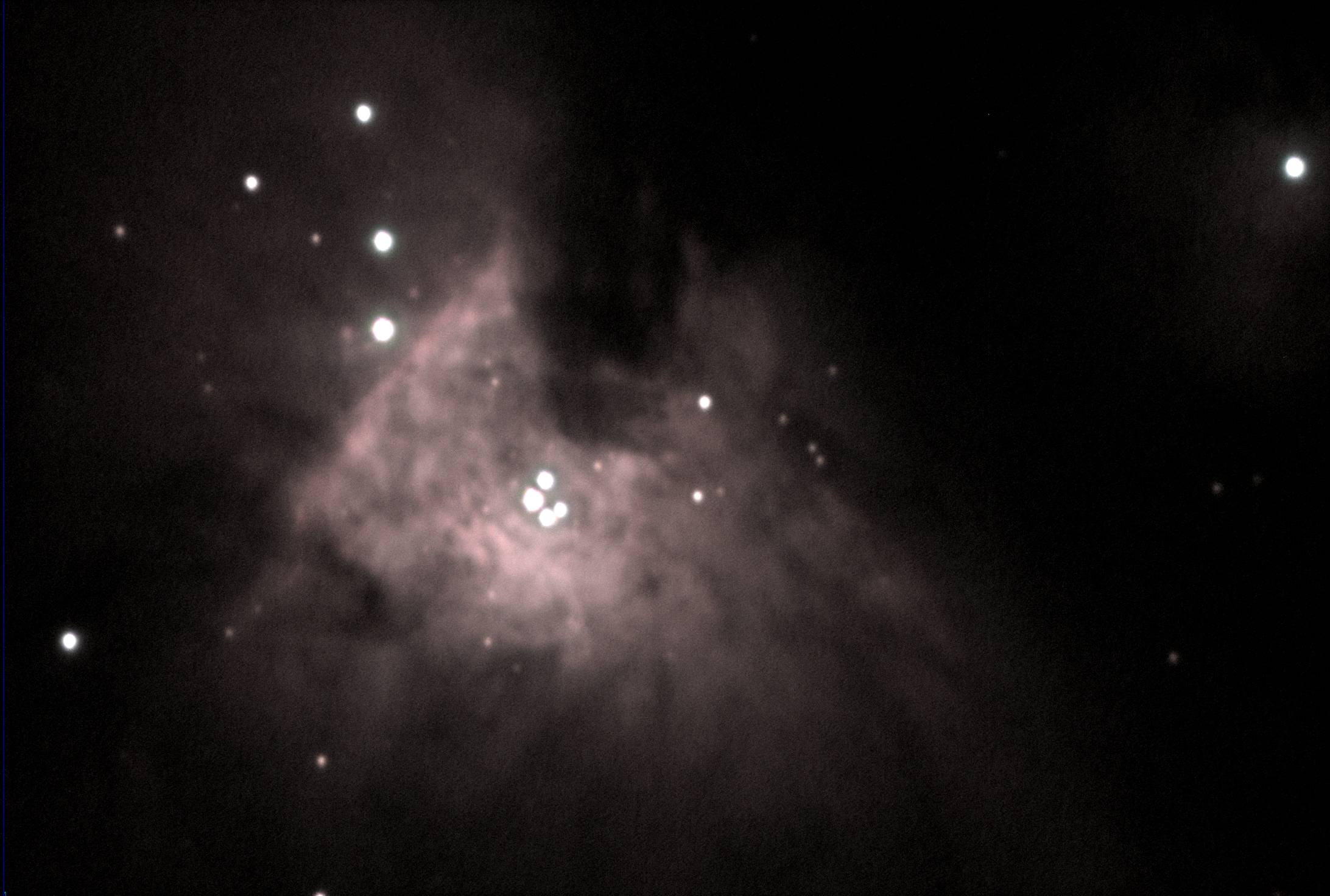
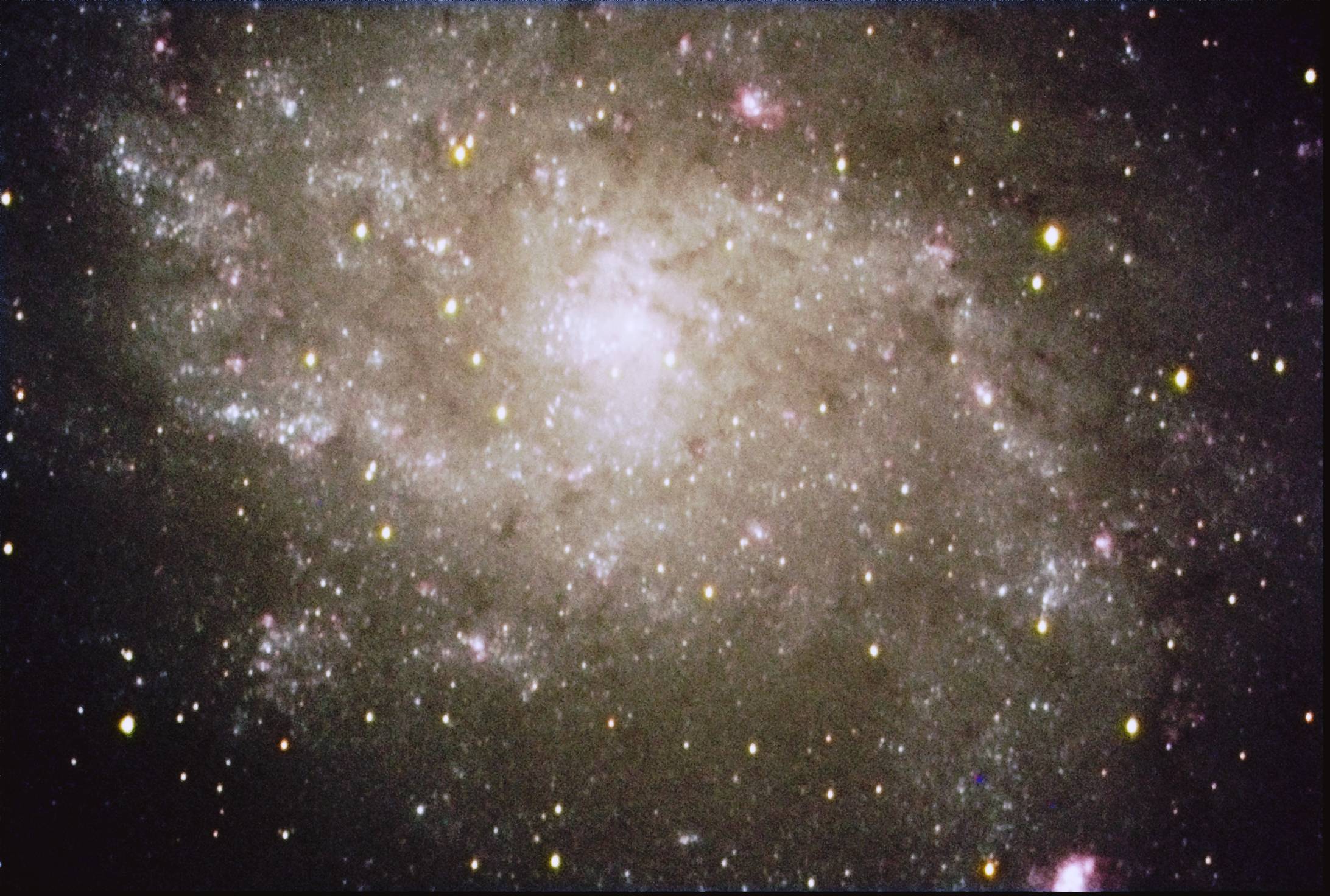
Sum of 17 x 60s luminance plus 5 x 60s for each of R, G & B filters, QSI 532ws camera at f 6.57
PhD guide used with focal reducer on guide scope. 10s exposure times on guide camera.
The telescope was only roughly polar aligned and not balanced so there was significant drift in DEC. PhD guide just about coped with this, but exposures longer than 60s were not really possible.
This galaxy is about 3 million light years away and has a diameter of about 50,000 light years. It is one member of the local group. M33 is thought to be affected by the gravity of the Andromeda Galaxy, M31.